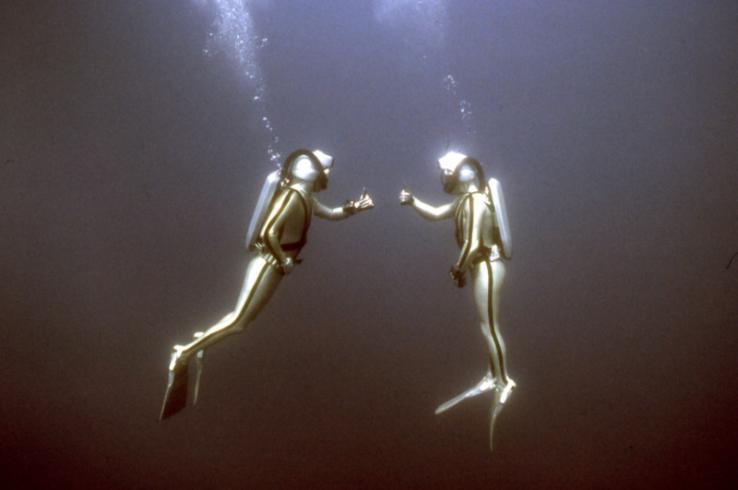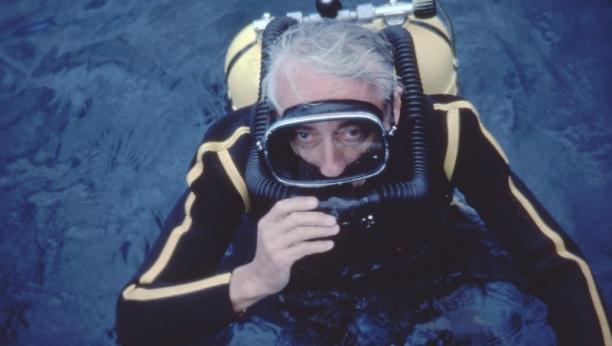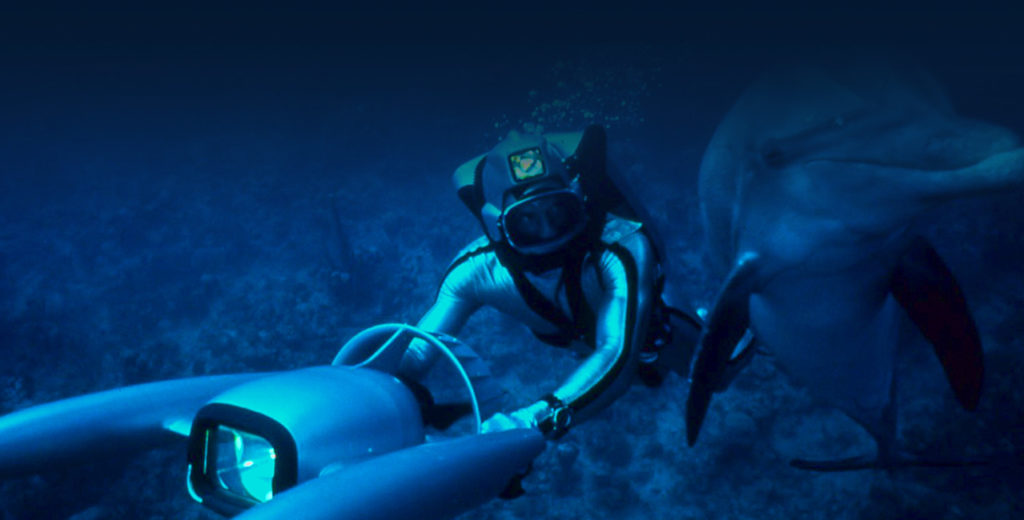


In Captain Cousteau’s films, divers in silvery suits glide silently amid the marine life. Scuba frees them from the surface.
The story of the Aqua-Lung goes back to World War II. In June, 1943, on a small beach of the Riviera, Jacques-Yves Cousteau, wearing rubber fins, shouldered the new completely autonomous diving gear.
It was inspired by the discoveries that preceded it, particularly that of Captain Yves Le Prieur, pioneer of autonomous diving who, in 1925, perfected an open-circuit, compressed-air device. There was one problem: the continuous flow of air limited how long the device could be used. The solution was born in Paris. During the war, the Germans requisitioned automobile gas. Engineer Emile Gagnan invented a demand regulator that would feed cooking gas to a car’s carburetor in the exact amount the jet needed.[/wc_column][/wc_row]
Cousteau modified the regulator, adapted it and made it the crowning piece of his Self-Contained Underwater Breathing Apparatus (SCUBA), the Aqua-Lung.
In 1966, Cousteau brought together his best divers, engineers and designers to provide Calypso with sophisticated equipment they called streamlined scuba. This new equipment reduced fatigue and consequently air consumption, allowing the divers to move about more quickly and for a longer time. The membrane of the regulator was positioned on the chest, closest to the center of the volume of air in the lungs.
Saving and protecting marine life for present and future generations since 1973
©2024 The Cousteau Society.
All rights reserved.